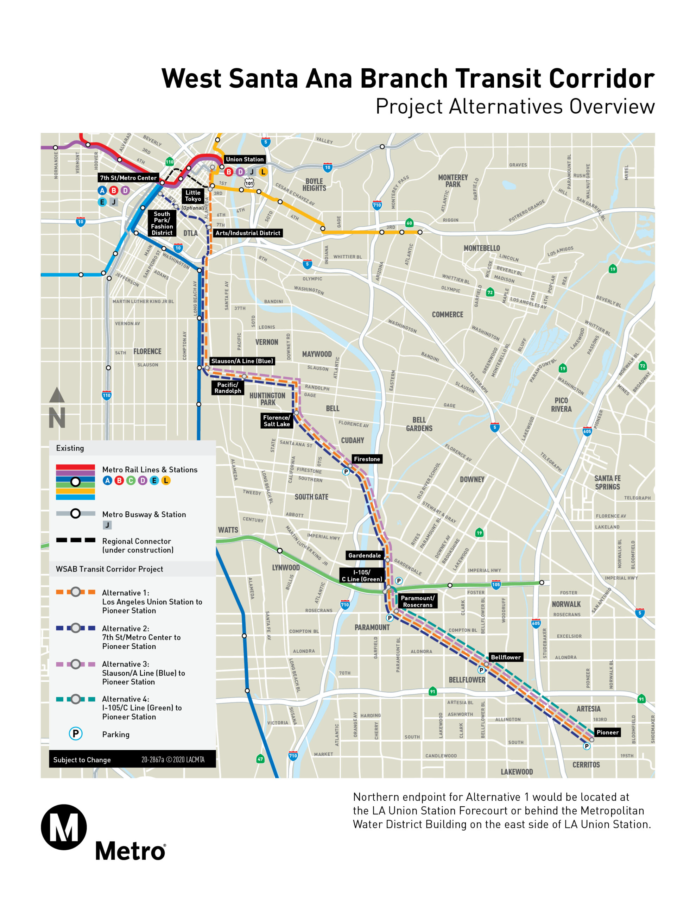Southern California transportation officials have given the go-ahead for a 19.3-mile light rail line that would serve largely working-class Latino communities in southeast Los Angeles County. They also agreed to look for ways to accelerate the project, including breaking it into two phases.
Groundbreaking for the West Santa Ana Branch Transit Corridor’s $4.9-billion first phase is is scheduled for 2023, with construction completed about a decade later.
Overall costs for the project including a second phase, due to be completed in 2043, are anticipated to be $8.5 billion, more than twice the original estimate, the Los Angeles Times reports.
When completed, the line will start at Artesia and continue northwest to Union Station, cutting through the cities of Cerritos, Bellflower, Paramount, Downey, South Gate, Cudahy, Bell, Huntington Park and Vernon. “It would provide key connections to other lines, helping build out a rail system decades in the making,” the newspaper reported on Jan. 28.
The first 14.8-mile phase will follow a former Pacific Electric right of way from Artesia to Slauson Avenue and Long Beach Boulevard, where it would connect with the A (formerly Blue) line.
The second phase heads north 4.5 miles from the Slauson depot to Union Station and is set to be completed by 2043. “About half of the line is planned to run underground through Little Tokyo, where Metro construction disrupted businesses for years and tunneling is driving up costs,” the Times reported.
On Jan 27, the MTA Board at the urging of Janice Hahn who represents the southeast corridor, unanimously approved a plan that will look at cheaper alternatives to tunneling that could accelerate construction for the second phase.
“In an hours-long public comment period, dozens of elected officials representing the communities along the rail line pleaded with the board to speed up the timeline,” the Times reported.
The rail line was a cornerstone of Measure M, a $120-billion half-cent sales tax approved by voters in 2016, which gained widespread support among elected officials in the region. Along with Measure R, approved in 2008, the tax fueled a rail construction boom.
However, Sseveral changes to the original 2017 project increased costs, including adding 2.3 miles of underground tunneling, aerial bridges over intersections, the relocation of utility lines and a transfer station to the C (formerly Green) Line at the 105 Freeway.
Metro plans to use $3.1 billion in federal funds and an additional $850 million in state funds for the first leg of the rail line, the Times reported.














